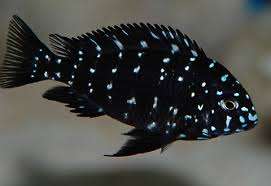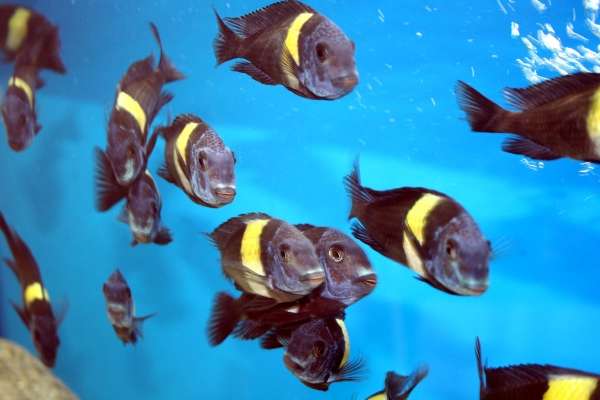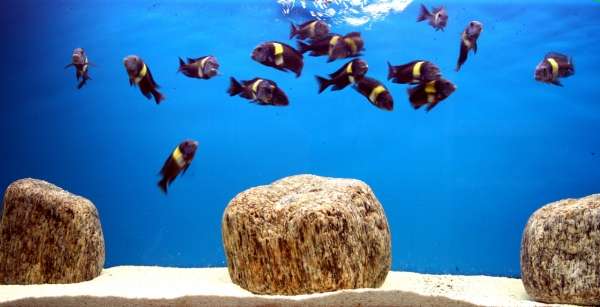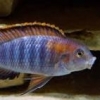As the Fish of the Month for November, there will a bag of 6 x Tropheus sp. duboisi around 5-6cm available at the PCS Meeting for auction. These are special lots to raise money for Stuart Grant Fund for Cichlid Preservation and have kindly been donated by one of our PCS Premium Sponsors - Vebas Aquariums.
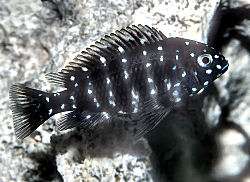

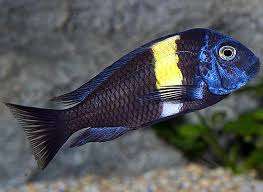
Tropheus sp. duboisi
This species is from Karilani Island - Tanzania, Kigoma - Tanzania, Cape Kabogo - Tanzania, Bemba - Republic of Congo and Magara - Republic of Burundi.
Common names: White spotted cichlid, Blue faced duboisi, narrow band duboisi, wide band duboisi,
Currently there are six Tropheus species that are scientifically described, including the Blunthead Cichlid - Tropheus moorii, Blue-Eyed Tropheus - Tropheus brichardi, White Spotted Cichlid - Tropheus duboisi, Tropheus annectens, Tropheus kasabae, and Poll's Tropheus - Tropheus polli. Although these five are each identified individually, four of them have a number of color morphs. The Blunthead Cichlid is the champion of varieties however, as it has 50 or so color morphs.
Although only six Tropheus cichlids have been scientifically named, there are a number of other beautiful varieties. Those that have not yet been described as their own species nor placed back in one of the other categories are sold as Tropheus sp. "black", Tropheus sp. "red", Tropheus sp. "ikola", and Tropheus sp. "mpimbwe".
Like others in the genus, Tropheus duboisi is something of an enigma in the aquarium hobby and despite it’s popularity, is not a good species for the beginner. This fish starts out as a juvenile with a jet black body adorned with dozens of white or light blue spots that completely cover its flanks. As it matures, this colouration fades to a blue-black, it loses its spots and develops a blue head with a vertical yellow band (or white if from Burundi). The Maswa variety are perhaps the most popular in the hobby because its yellow band is particularly wide. Males and females have identical coloration. There are several geographical morphs available. Obviously, these should not be mixed in aquaria, as they will hybridise freely.
- Tropheus duboisi "Karilani" - Narrow Band Duboisi, karilani cichlid. This variety is from Karilani Island, Tanzania and has a narrow white mid-section band.
- Tropheus duboisi "Kigoma" This variety is from Kigoma, Tanzania and has a broad white mid-section band, but not as wide as on the variety from Bemba.
- Tropheus duboisi "Maswa" or Tropheus duboisi "Malagarazi" - Broad Band Duboisi, Wide Yellow Band Duboisi. This variety is from Cape Kabogo, Tanzania and has a broad yellow mid-section band.
- Tropheus duboisi "Bemba" - Wide Band Duboisi. This variety is from Bemba, Congo and has a wide white mid-section band.
Size
Maximum length is around 4.8″ (12cm).
Lifespan: 5 years - They generally live for 5 - 8 years, but may live 10 years or more with proper care.
Classification
Order: Perciformes Family: Cichlidae
Distribution
Tropheus are found all over Lake Tanganyika. They inhabit shallow waters around rocky parts of the shoreline.
Diet
The Tropheus species are technically omnivores, but should be fed heavily on vegetable matter. In the wild they are specialized aufwuchs feeders, aufwuchs refers to tough stringy algae that is attached to rocks. Tropheus are all algal grazers, feeding on algae and microinvertebrates they rasp from the rocks with specially adapted underslung mouths. It will accept most foods offered but vegetable matter in the form of Spirulina flakes, blanched spinach, nori etc. should form the basis of the diet. This can be supplemented with small feeds of live and frozen varieties. Never feed beefheart or any other animal meat as it interferes with the digestive system of these fish.
Feeding Frequency: Several feedings per day - Generally feed 2-3 small feedings a day rather than a single large feeding for better water quality.
Maintenance
These fish are suggested for more experienced aquarists as they are rather demanding to keep. This is due to their susceptibility to certain infections of the intestinal tract such as "bloat", so require more stringent requirements with diet and habitat. They also have a highly aggressive nature. They can be moderately easy to keep if it properly fed and the water quality is kept up, but difficult if not. They do best in a species tank, and only with other herbivorous types of cichlids included if the tank is large. The aquarists must be willing to do frequent water changes and provide appropriate tank mates.
Many aquarists keep Tropheus in bare setups to reduce territorial behaviour but they can also be maintained in decorated aquaria. If you wish to decorate the tank, use piles of rock work to form many cave-like structures and hiding places, interspersed with open areas for swimming. In either case use sand as substrate, and ensure the water is well-oxygenated.
Water Changes: Weekly - Water changes of 15% twice a week or 30% weekly are recommended.
Temperature: 73-81°F (23-27°C) pH: 8.0-9.5 Hardness: 8-25°H
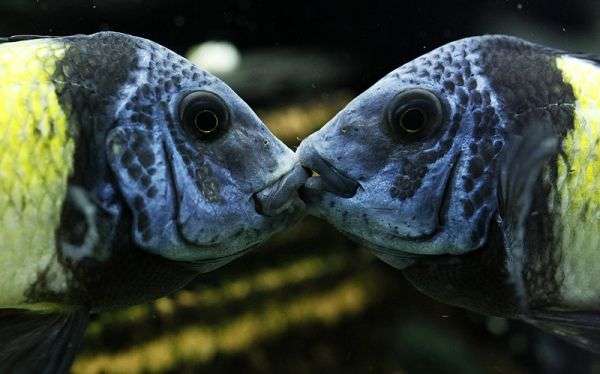
Character
It has a somewhat dubious reputation for aggressive behaviour but this is undeserved. In fact, it is relatively peaceful towards other species but will squabble with conspecifics. The fish are very active however and should not be kept with shy species. Possible tank mates include Julidochromis, Eretmodus and Tanganicodus species, as these require a similar diet to the Tropheus.
Obtaining a peaceful species group of Tropheus is, unfortunately, rather difficult. The fish do not school in nature, and will usually fight amongst themselves in the aquarium, until a natural pecking order is established. However, in smaller groups (5-6 fish), the fish do not settle easily and may fight to the death. It is therefore generally recommended to purchase a group of 15-20 fish in order to reduce territorial behaviour. There are exceptions to this and we have seen small groups and even pairs of Tropheus living peacefully together, but these are exceptions to the rule. The main problems associated with successfully keeping a Tropheus colony are thus cost and tank size, with a 60″ x 18″ x 18″ tank being the minimum size for a group. If it is maintained in a large group, the social interactions between the fish are truly fascinating. New individuals should never be introduced into an established community of Tropheus, as they will not be tolerated.
Do not keep with slow moving fish or carnivores. Tropheus cichlids are voracious eaters and will eat anything that enters the tank. They will rarely let food get to the bottom. Providing more food and in an attempt to feed the non-tropheus tank mates can cause them to overeat and can lead to bloat.
If breeding them do not house with plecostomus as these fish will eat the fry at night.
Spawning
Maternal mouthbrooder. The tank should be set up as decribed above. We recommend the purchase of 20-30 young fish and allowing them to grow on together, as adults are costly. If you can, try and obtain tank-bred fish, as wild specimens tend to be far more delicate, aggressive and expensive. It is difficult to obtain the perfect group, and some fish (particularly subdominant males) may be lost. The other method is to remove dominant males as they develop until you have the desired sex ratio. If you wish to keep more than one male, you should provide each with around 2 feet of territory, each containing a rock pile which the male will defend. 6-10 females should be kept per male. If there are multiple males in the tank, but only a single or continuous rock pile, only one male will become dominant and spawn with the females.
The fish spawn in open water, usually over rocks. During spawning itself the female may either take the eggs into her mouth before they reach the substrate, or allow them to drop into spaces between the rocks before picking them up. She then nuzzles the vent of the male, who releases his milt directly into the female’s mouth, thus fertilising the eggs.
The female may carry the brood of 5-15 eggs for over 4 weeks before releasing the free swimming fry. She will usually continue to eat during this period and can be easily spotted by her distended mouth. If a female is overly stressed, she may spit out the brood prematurely or eat them, so care must be taken if you decide to move the fish. This is not recommended for Tropheus, as if a female is away from the colony for too long, she will lose her position in the pecking order of the group, and may be viciously attacked when she is returned.
Conversely, if she is left in the main aquarium she may lose most of the brood due to harassment from other fish. If you do move the female, turn off the tank lights and cover it with a blanket for a few hours when she is reintroduced. Most breeders who wish to raise large numbers of fry artificially strip them from the mother’s mouth at the 2 week stage and raise them from that point. This approach is only for experts, however.
The fry are large enough to take brine shrimp nauplii, microworm and powdered dry foods once they become free swimming. If they are left with the mother brood care continues for a time, with the fry seeking refuge in her mouth when they feel threatened.
Notes
Despite it’s popularity is not a good species for the beginner. There has been much arguement and discussion about how best to maintain it in the aquarium, and some of these debates still rage on. We have provided the generally accepted method of keeping the fish, but in reality what works for one aquarist may not for another. One aspect which is always true, is that water quality is of the utmost importance in a Tropheus tank, as they are very susceptible to “bloat”.
This species exists in over 50 geographical morphs, some of which have truly stunning colouration. Obviously, these should not be mixed in aquaria, as they will hybridise freely. It is likely that some of the morphs will eventually be described as distinct species.
A special thanks to Vebas Aquariums for donating these wonderful fish. Your support to Perth Cichlid Society and the Stuart Grant Fund is extremely valued. Check out Vebas Aquariums for more Tropheus Sp. duboisi and loads of other fantastic fish.



